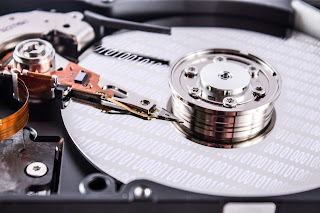 In the words of LT Pete "Maverick" Mitchell, "I feel the need....the need for speed!" Well, at least that's what Intel is feeling as it just announced that it will be putting its absurd 72-core Knight's Landing supercomputer chip into production. However, that isn't even the most exciting part. The most exciting part is that the Knight's Landing, which is Intel's fastest chip to date, will be going into desktop workstations that will contain enough computational power to make Doc Brown's overloaded speakers look like a kids karaoke machine.
In the words of LT Pete "Maverick" Mitchell, "I feel the need....the need for speed!" Well, at least that's what Intel is feeling as it just announced that it will be putting its absurd 72-core Knight's Landing supercomputer chip into production. However, that isn't even the most exciting part. The most exciting part is that the Knight's Landing, which is Intel's fastest chip to date, will be going into desktop workstations that will contain enough computational power to make Doc Brown's overloaded speakers look like a kids karaoke machine.PC World recently reported that the company is planning on shipping a "limited number of workstations" that will come equipped with the super-fast supercomputer chip in the first half of 2016. As a result PC makers will have the ability to adopt Intel's supercomputer silicon in desktop models on a greater scale, according to Intel's Charles Wuischpard. I don't know about you, but I'm not sure I can handle a chip like this being in something that is sitting in my room or my office. But then again the power is very alluring.
The main question that is going to be on everyone's mind is, of course, what kind of specs we can expect from the Knight's Landing chip. This chip differs from the ones currently in your desktop in the fact that this supercomputer processor puts all of its cores onto a single piece of silicon. Then, all of these processors are bundled up with 16GB of on-package MCDRAM memory into a PCI-E add-in card. This is very similar to the ridiculous Nvidia GPUs that are currently being installed on supercomputers around the world.
Once you have all of this packed together and installed inside your computer you are left with a piece of hardware that is capable of computing single-precision calculations at a rate of 8 teraflops, or double-precision calculations at over 3 teraflops. PC World also noted that this chip will be used by the United States Department of Energy inside of its 9,300-core Cori supercomputer and, in addition to that, Intel has also claimed that 50 different manufacturers will ship systems that use this chip in time.
In the meantime the desktop workstations, which are essentially jacked up versions of the CAD, graphics and film editing computers that are used in offices where money is as abundant as air, will be made available to researchers who are interested in using a supercomputer but are otherwise unable to gain access to one. The idea is that these individuals will be able to develop and test code on the workstation before shipping it out, error-free, to a supercomputer somewhere in the future. I highly doubt that you will be getting something like this in your iMac anytime soon, though Intel is, at the very least, attempting to put this chip into the hands of people that would otherwise have no access to such a device.
Content originally published here
Sharing this story on social media? Use these hashtags! #Intel #KnightsLanding #Supercomputer




